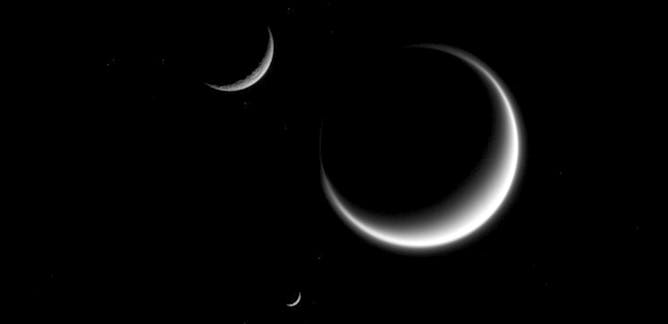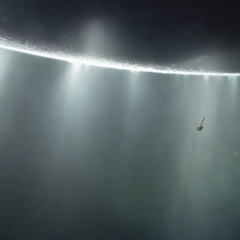
Articles on Moon
Displaying 1 - 20 of 327 articles

It’s not a competition, but if it were, Saturn would be winning.

There’s intense competition between the US and China to establish bases on the Moon.

The Sun will be at its most explosive right around the time NASA plans to put people back on the Moon.

The best spots on the Moon for lunar bases are the same spots where scientists want to build telescopes − can these two interests coexist?

China’s Change'6 is going to explore the Moon’s far side and bring back precious lunar soil for scientists to study.

China’s new mission could answer longstanding questions about the Moon.

Astrophysicist Jacco van Loon joins us on The Conversation’s Curious Kids podcast.

The monument’s ancient connection to the skies may run even deeper than we realised.

Saturn’s moon Enceladus has geysers shooting tiny grains of ice into space. These grains could hold traces of life − but researchers need the right tools to tell.

Space exploration is not a waste of resources, but a source of technological and medical advances, a tool for climate monitoring and a source of educational inspiration for youth.

Eclipses have long fascinated and intrigued people, and anticipation of the total solar eclipse on April 8 is no exception. The beauty, history, mythology and science of eclipses justify the hype.

A total solar eclipse is a beautiful phenomenon worth seeing, but worth seeing safely.

Your phone can’t take a perfectly clear picture of a solar eclipse like a professional camera can, but there are lots of other creative directions you can take to capture the rare moment.

The solar corona can be seen during the solar eclipse on April 8. Astronomers are still trying to figure out the mysteries of the corona, including why it’s so hot.

The eclipse will allow scientists to get rare measurements of the Sun’s atmosphere.

Apart from technical aspects, a successful photograph of the eclipse serves as a lasting reminder of the sense of wonder and the feeling of being part of something larger than ourselves.

The last full moon of winter can illuminate earthworms in newly-thawed soil.

If you have young kids, the solar eclipse on April 8, 2024, represents a rare opportunity to teach them about science.

Eclipses are rare, fantastic celestial events. Here’s how educators can help visually impaired students enjoy eclipses alongside their sighted peers.

Eclipses have inspired myths, predictions and scientific discoveries. The total solar eclipse occurring on April 8 provides a once-in-a-lifetime opportunity to engage with science and the cosmos.

